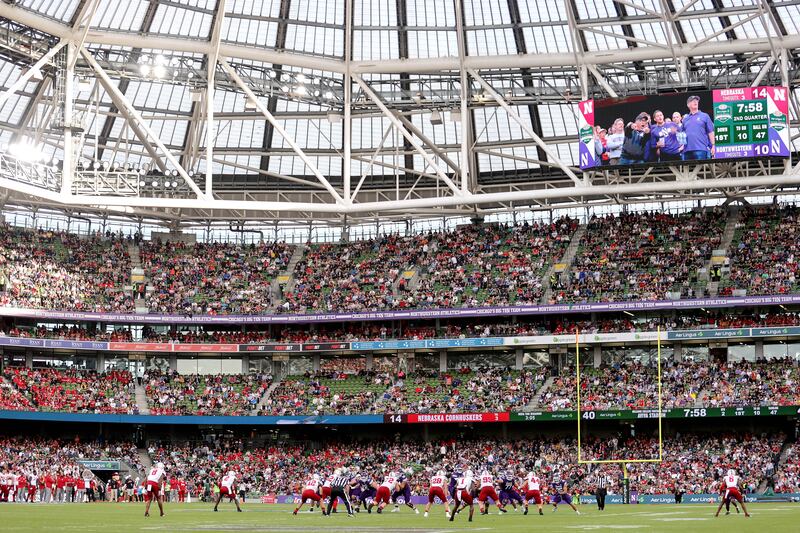About once a week, the head coach of the college gridiron team would punish the squad by making them “hit the concrete”. This involved repairing to a driveway near the training field where they were ordered to rattle off 25 knuckle push-ups at a time. The surface was pockmarked with stones so their hands soon bled. Oftentimes, players, including linemen tipping the scales at 24 stone, were forced to hold the down position for 30 seconds. For added suffering. This ordeal could go on for half an hour and it might be six months before their torn skin returned to its normal colour.
In just about every university across America, footballers are routinely subjected to physical and verbal abuse and torturous hazing rituals of that ilk. Those deemed not tough enough are nicknamed Tampax or Charmin (a brand of toilet paper) by men in charge and routinely called “b***h”. One coach uses a microphone so his detailed descriptions of his players’ shortcomings and failures can be heard on the PA blaring out across campus to maximise their embarrassment. Another walks out of the room if his players don’t afford him a sufficient standing ovation upon entering. Everywhere, young men of 18 and upwards are constantly threatened with losing their athletic scholarships if they underperform.
The arrival of college football into Dublin this week offers the now annual reminder that the sport stages an entertaining and rather seductive sideshow. All the pageantry of marching bands, the novelty of cheerleaders, and the capers of middle-aged alumni trying to revisit autumn nights of their undergraduate youth will land alongside the teams of Florida State and Georgia Tech. The presence of ESPN (complicit in this systemic fleecing of these athletes for decades) and its clown car College GameDay crew franks the occasion with increased shouty importance. But, behind all the rah-rah buffoonery of alickadoos and media shills, this may be the most rancid corner of the American sports world. Some boast that.
“The only ethical solution to the problem of college football is abolition,” write Nathan Kalman-Lamb and Derek Silva in The End of College Football: The Human Cost of an All-American Game, a searing and forensic exposé of the game to be published later this year. “The sport cannot continue to exist if we are serious about universities as places where students are nurtured, developed and protected from harm.”
Ireland v England: TV details, kick-off time and team news for Six Nations opener
Gerry Thornley: Odds are against Ireland completing Six Nations three-peat, this is my forecast
Maurice Deegan: An encouraging start for the football rules but a long road ahead
New football rules arrive ‘about as well as anyone could have hoped’
Via raw and disturbing testimonies from former players, anonymised because these schools have a long and powerful reach, Kalman-Lamb and Silva have pieced together a compelling argument that college gridiron is not a sport but a brutal industry where young, mostly black men are chewed up and spat out. Even after the recent introduction of Name, Image and Likeness (NIL) rules, allowing the best players to earn endorsement income, this book teems with evidence that for most participants it remains a form of indentured servitude where mere lip service is paid to delivering any sort of proper education.
Freshman footballers are immediately subsumed into a culture of academic cheating and connivance designed to ensure grades stay just high enough to make them eligible to play. Aside from being guided toward “friendly” professors and joke shop classes, there are elaborate in-house scams involving test answers texted to Apple watches, non-athletes being paid to turn up to gain them attendance credit at lectures, and individuals being fraudulently classified as learning disabled to get them more time to take exams.

Everything is about getting these lads on to the field or in the weights room at the expense of their studies. Inevitably then, plenty graduate with degrees that are worthless, complaining they were never allowed to pursue majors of their own choosing. They do learn some lessons, however, like the crucial difference between being injured and playing hurt. The authors diligently chronicle athletes being forced into playing through head trauma out of fear that martinet coaches might otherwise revoke their scholarships. Others testify to deciding not to report injuries, including concussion, lest they be perceived as weak or unmanly.
“Coaches are incentivised by a system that rewards them for winning games with lucrative contracts to demand as much performance as possible from their players,” write Kalman-Lamb and Silva. “If this means compelling a player to play through injury, they are often willing to do it. Whether it is stern command or subtle coaxing, the result is the same; players are subjected to physical harm nobody should be expected to endure.”
Aside from the corporate partners turning a buck, it’s astonishing that Tourism Ireland, Dublin City Council, and the Department of Tourism, Culture and the Arts are involved in bringing this meat grinder to Dublin. Public entities are promoting an exploitation factory but won’t be criticised for it simply because the game generates serious revenue. Same reason so many across America ignore the sins of the sport and probably won’t bother even reading Kalman-Lamb and Silva’s comprehensive and overdue takedown of it. Like Florida State’s head coach Mike Norvell trousering $10m a year, too many people are making too much money to take a difficult moral stance.
Years from now, some of the young men careering around the Aviva Stadium this Saturday may well struggle with expensive medical bills from the after-effects of injuries sustained playing for these universities. If history is anything to go by, the same institutions making millions of dollars on the back of the players won’t contribute a cent to helping them out when that happens. Dublin will be just one more painful memory then.

















